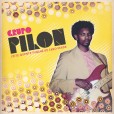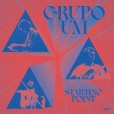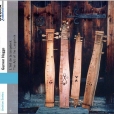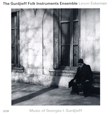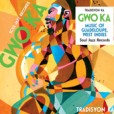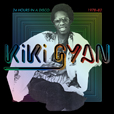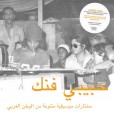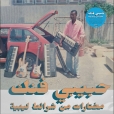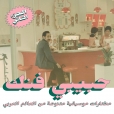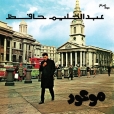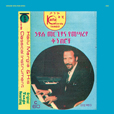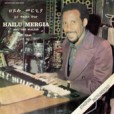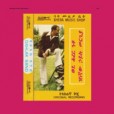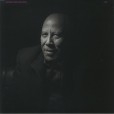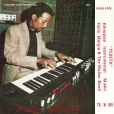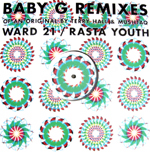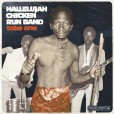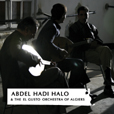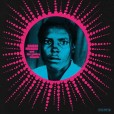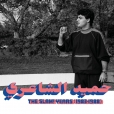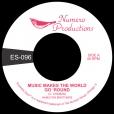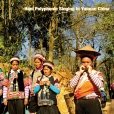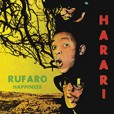Your basket is empty

Rough, tough, tumping, bumping soundboy breakbeat from the Caribbean coast of Colombia.
Forty brand new buckaroos, tooled and primed by Jeanpi Perreo, Edwin Producciones and DJ Ander — all from local sound-systems — careering guarapo-style out of punches of vintage Nigerian highlife, waka and co, by legends like Steven Amechi, Sagbeni Aragbada and Cardinal Rex Jim Lawson.
Edited and mastered by CGB at D&M for maximum oomph and worries, and presented in a gatefold sleeve with cool and deadly varnishing. Plus a full-size booklet detailing the fascinating history of this music, seamed into the strange, tentacular byways of hand-to-hand vinyl distribution, record collecting and musical connoisseurship, and the soundclash traditions of the region, suffused with the politics and culture of the Black Atlantic, stretching back to the 1950s.
Invigorating, soulful music; warmly recommended.
The langeleik is a box zither with one melodic string, and three to eight accompaniment strings or drones. Gunvor was taught by her grandmother. Here she is joined occasionally by two violinists and a a second zither.
The compositions are mostly traditional and centuries-old. The drones draw you in deep; the melodies take flight. Rapturous waltzes, giddying dance music, aching laments, sublime evocations of nature…
Dusting off Armenian, Greek, Arabic, Kurdish, Assyrian, Persian, Caucasian roots — and ‘a stillness that has not been darkened at all, and has the degree of density that leaves the Gurdjieffian silence immaculate.’
Grooving Ghanaian boogie from the wizz keyboardist.
A mix of overlooked gems and local boomshots from the cassette tape scene in Libya, during the late 80s to early 2000, when independent artists relied on makeshift home studios or travelled abroad to record in Tunisia and Egypt. A judicious mash-up of boundary-pushing sounds which reflects this precariousness and nascency; also the political and cultural crossroads at which Libya found itself. North African rhythms meet Arab melodies and deep African roots. Disco and house run into gritty pop. Reggae courses through, with an unmistakable Libyan twist — not just musically, in the slowed-down cadence of traditional shaabi beats, but also culturally, taking to heart its outernational message of proud, defiant self-awareness.
Assembled by Habibi Funk with personality and love, as per; with a 32-page booklet. Another winner.
Last few box sets!
An all-time classic of contemporary Egyptian music, recorded in 1971. The composition is by Baligh Hamdi, for a full orchestra, featuring Omar Khorshid on guitar.
It’s a one-man-band evocation of the traditional accordion sound of his youth, adding a Moog, Rhodes and beat box. Light and fleet-footed, but questing and utterly heartfelt.
Switched-on Ethiopiques, refreshing and lovely as anything. No doubt insufficiently solemn and inauthentically-authentic for World Music plod, but hotly recommended by us.
Taking a break from cabbing duties back home in Washington DC, for his first LP in fifteen years. Ethiopian standards and originals; his unmistakable melodica, accordion and keys, in the same double-bass-and-drums setting as recent live shows.
The second son of King Jammy, Trevor James aka Baby G is at the cutting edge of the new wave of dancehall producers. Jammy’s stalwarts Ward 21 and newcomers Rasta Youth on the mic.
‘In 1972, the country of Rhodesia — as Zimbabwe was then known — was in the middle of a long-simmering struggle for independence from British colonial rule. In the hotels and nightclubs of the capital, bands could make a living playing a mix of Afro-Rock, Cha-Cha-Cha and Congolese Rumba. But as the desire for independence grew stronger, a number of Zimbabwean musicians began to look to their own culture for inspiration. They began to emulate the staccato sound and looping melodies of the mbira (thumb piano) on their electric guitars, and to replicate the insistent shaker rhythms on the hi-hat; they also started to sing in the Shona language and to add overtly political messages to their lyrics (safe in the knowledge that the predominantly white minority government wouldn’t understand them). From this collision of electric instruments and indigenous traditions, a new style of Zimbabwean popular music — later known as Chimurenga, from the Shona word for ‘struggle’ — was born. And there were few bands more essential to the development of this music than the Hallelujah Chicken Run Band…’
Their biggest hits — along with several rare tracks — recorded between 1974 and 1979.
Chaabi — ‘of the people’ — has its roots in the Andalusian music of Moorish Spain, spreading to North Africa with exiled Jewish and Moorish communities; but it really took off in post-WWII Algiers…
Raw, bustling, parping afro-funk from northern Cameroon.
The complete works: three sevens.
‘As with many other ethnic groups of the area, a traditional singing pattern is used with each singer adapting words to context. Many of these songs express intimate, strong emotions that bring tears to the performers while they are singing. The cascading mournful feel of this music is beautifully transcendent. You’ve never heard anything like it.
‘Instruments used by the ensemble include the babi (single tree leaf ) and mepa (tree leaf rolled up into the shape of a horn or mirliton), a chiwo (three-stringed bowed instrument), a labi (six-holed bamboo flute), a lahe (three-stringed small lute) and a meba (vertical reed instrument).’
The Beaters changed their name in tribute to the Rhodesian township which hosted their Damascene cultural and political awakening. One year after the LP entitled Harari came out in 1975, they were back in the studio, deepening the African sensibilities of their music, but also trying out influences like jazz, fusion and prog, which would carry them forward.
